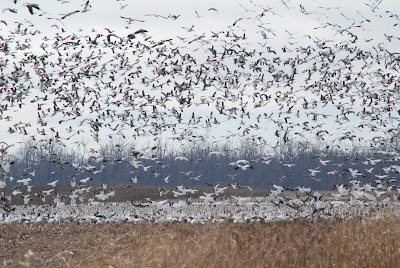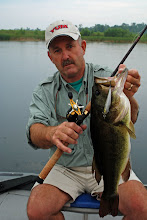


FIVE TECHNIQUES FOR
TAGGING A TURKEY
Bill Cooper for River Hills Traveler March, 2010
Rumblings of boisterous, lovesick, wild turkey gobblers
are not the only raucous sounds being heard in the Ozarks
turkey woods these days. Hunters have grumbled and mumbled
the last few seasons about gobblers being difficult to
find and hunt.
The fact is that turkey numbers are down from historical
highs which we all enjoyed a few years ago. There seemed
to be a turkey behind every tree and a lot of us developed
the idea that we were superb turkey hunters. The abundance
of two-year-old birds that loved to gobble and run in to
any call that sounded like a rusty gate hinge fed our
egos.
Matters have changed. Numbers of birds are down and the
abundance of two-year-old birds that we once enjoyed is
gone. We are now dealing with a lot of older and wiser
birds. If you want to be consistently successful at
bagging your spring birds, your tactics will have to
change.
Scouting - There may not be birds in the area you have
been accustomed to hunting in the past. It is impossible
to kill a bird that is not there. We all love it when we
have a honey hole which produces birds year after year.
Turkey hunters are passionate about their sport and love
to call and kill gobblers. Many hunters often waist
precious hunting days by remaining in areas that have
produced in the past, but obviously lack birds in the
present.
Pre-season scouting is paramount during tough turkey
hunting years. If you return to your old stomping grounds,
scouting is easy. You know the areas where birds hang out.
If you don't find the usual signs in the usual quantities
and places, it is time to scout elsewhere. Look for
tracks, droppings, dust bowls, drag marks from strutting.
Look for sign along creek bottoms, dirt lanes, edges, pond
banks and other open areas. If you are in agricultural
areas, check for scratching around cattle feeding spots.
Turkey sign can often be found around cow flops, too.
If you insist on staying in your favorite area, your
scouting time can be greatly reduced, because you know
where to look. You already know where hens are most likely
to nest. There will return to the same areas and will drag
the toms along.
The next step is formulating a plan for opening morning.
The best way to do that is to be there well before
daylight for pre-dawn gobbling and the fly-down. Hopefully
the turkeys in the area have not been bothered all winter.
Stay long enough to determine which direction the gobblers
travel after fly-down. Staging your setup in a gobbler'
routine travel path is insurance for a shooting
opportunity on opening day.
To upgrade your odds for bagging a bird on opening day,
make one last scouting trip the evening before opening
morning. Pinpoint the spot where you here that bird fly
up. You want to know its exact location for the next
morning's hunt.
Tweak your camo - No modern day turkey hunter would dream of heading
to the turkey woods without his camo. However, even the best patterns
are a dead giveaway if it does not match the surroundings in which you
plan to hunt. While on your scouting trips, pay close attention to the
stage of vegetative development in the area. Woods with little
green-up will be wide open and will contain more brown than green.
Unless you are dressing for a camo pageant, mixing and matching
different styles of camo can help you blend into your surroundings.
And needed camo patterns may change by the day. Green-up can advance
quickly, or hunting plans may change. You may be hunting on a flat oak
ridge top one day, where everything is mostly brown, and on a cedar
glade the next where everything is mostly green.
TAGGING A TURKEY
Bill Cooper for River Hills Traveler March, 2010
Rumblings of boisterous, lovesick, wild turkey gobblers
are not the only raucous sounds being heard in the Ozarks
turkey woods these days. Hunters have grumbled and mumbled
the last few seasons about gobblers being difficult to
find and hunt.
The fact is that turkey numbers are down from historical
highs which we all enjoyed a few years ago. There seemed
to be a turkey behind every tree and a lot of us developed
the idea that we were superb turkey hunters. The abundance
of two-year-old birds that loved to gobble and run in to
any call that sounded like a rusty gate hinge fed our
egos.
Matters have changed. Numbers of birds are down and the
abundance of two-year-old birds that we once enjoyed is
gone. We are now dealing with a lot of older and wiser
birds. If you want to be consistently successful at
bagging your spring birds, your tactics will have to
change.
Scouting - There may not be birds in the area you have
been accustomed to hunting in the past. It is impossible
to kill a bird that is not there. We all love it when we
have a honey hole which produces birds year after year.
Turkey hunters are passionate about their sport and love
to call and kill gobblers. Many hunters often waist
precious hunting days by remaining in areas that have
produced in the past, but obviously lack birds in the
present.
Pre-season scouting is paramount during tough turkey
hunting years. If you return to your old stomping grounds,
scouting is easy. You know the areas where birds hang out.
If you don't find the usual signs in the usual quantities
and places, it is time to scout elsewhere. Look for
tracks, droppings, dust bowls, drag marks from strutting.
Look for sign along creek bottoms, dirt lanes, edges, pond
banks and other open areas. If you are in agricultural
areas, check for scratching around cattle feeding spots.
Turkey sign can often be found around cow flops, too.
If you insist on staying in your favorite area, your
scouting time can be greatly reduced, because you know
where to look. You already know where hens are most likely
to nest. There will return to the same areas and will drag
the toms along.
The next step is formulating a plan for opening morning.
The best way to do that is to be there well before
daylight for pre-dawn gobbling and the fly-down. Hopefully
the turkeys in the area have not been bothered all winter.
Stay long enough to determine which direction the gobblers
travel after fly-down. Staging your setup in a gobbler'
routine travel path is insurance for a shooting
opportunity on opening day.
To upgrade your odds for bagging a bird on opening day,
make one last scouting trip the evening before opening
morning. Pinpoint the spot where you here that bird fly
up. You want to know its exact location for the next
morning's hunt.
Tweak your camo - No modern day turkey hunter would dream of heading
to the turkey woods without his camo. However, even the best patterns
are a dead giveaway if it does not match the surroundings in which you
plan to hunt. While on your scouting trips, pay close attention to the
stage of vegetative development in the area. Woods with little
green-up will be wide open and will contain more brown than green.
Unless you are dressing for a camo pageant, mixing and matching
different styles of camo can help you blend into your surroundings.
And needed camo patterns may change by the day. Green-up can advance
quickly, or hunting plans may change. You may be hunting on a flat oak
ridge top one day, where everything is mostly brown, and on a cedar
glade the next where everything is mostly green.




















